
Just over a year and a half since Apple launched its Studio Display, Samsung has released a direct competitor with its ViewFinity S9 5K monitor. With many of the same features as Studio Display plus some beyond, it’s an interesting alternative. Follow along for how Studio Display vs Samsung ViewFinity S9 stack up.
Background
After the Apple Thunderbolt display was canceled in 2016, the Apple-endorsed display became the LG UltraFine 27-inch 5K (full review) and 21.5-inch 4K – later replaced by the 24-inch 4K model.
Those checked a number of boxes like Thunderbolt single-cable connectivity, 4 and 5K resolutions, P3 wide color, and more. But many disliked the plastic design of LG’s UltraFine displays with chunky bezels (particularly on the 27-inch version) and an overall build below Apple’s standards.
Apple started making its own display again with the Pro Display XDR in late 2019 which drummed up lots of excitement. But its price tag of $5,000+ has kept it limited to professional use and those who aren’t price sensitive.
In March of 2022, Apple’s Studio Display launched with an impressive list of features and a beautiful aluminum build in the style of the Pro Display XDR – at a price more users, creators, and businesses can afford.

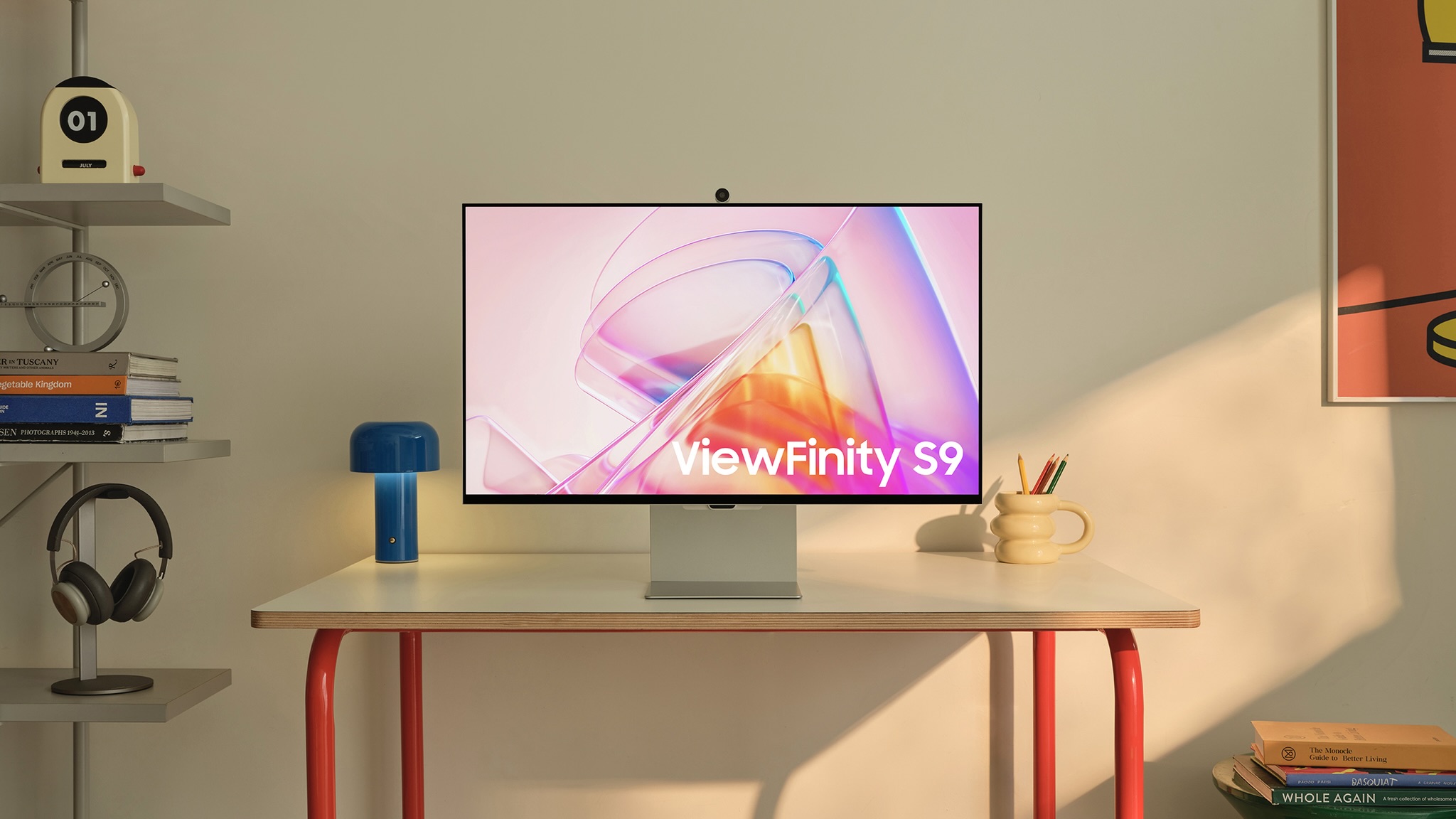
But it was only a matter of time before competitors like Samsung rolled out a monitor with similar key specs and design – enter the ViewFinity S9 5K Monitor.
For reference, we’ve also included the LG UltraFine 5K in the charts below.
Apple Studio Display vs Samsung ViewFinity S9
Price
Apple’s Studio Display starts at $1,599 and runs up to $2,299 depending on upgrades. The Samsung ViewFinity S9 is priced at $1,599 and comes with several features that Apple charges extra for.
Starting from a $300 difference, you get a lot more for your money with both the Apple Studio Display and Samsung ViewFinity S9 compared to the LG UltraFine.
Display panels
The panels of these three monitors are almost identical. Both the Studio Display and the ViewFinity S9 feature up to 600 nits brightness – the LG UltraFine sits just below at 500 nits.
Otherwise, you’re looking at 27-inch LCD panels with 5120 x 2880 5K resolutions.
| Studio Display | Samsung ViewFinity S9 | LG UltraFine 5K | |
| Size | 27-inch | 27-inch | 27-inch |
| Panel type | LCD with IPS | LCD with IPS | LCD with IPS |
| Resolution | 5120 x 2880 (5K) | 5120 x 2880 (5K) | 5120 x 2880 (5K) |
| Aspect ratio | 16:9 | 16:9 | 16:9 |
| PPI | 218 | 218 | 218 |
| Refresh rate(s) | 60Hz | 60Hz | 60Hz |
| Brightness | 600 nits | 600 nits | 500 nits |
| P3 wide color | ✅ | ✅ | ✅ |
| Finish | Anti-reflective/optional nano-texture | Anti-glare matte finish | Anti-glare |
Even though the LG UltraFine is quite old, the panel isn’t too far behind the specs of the Studio Display and ViewFinity S9.
Connectivity
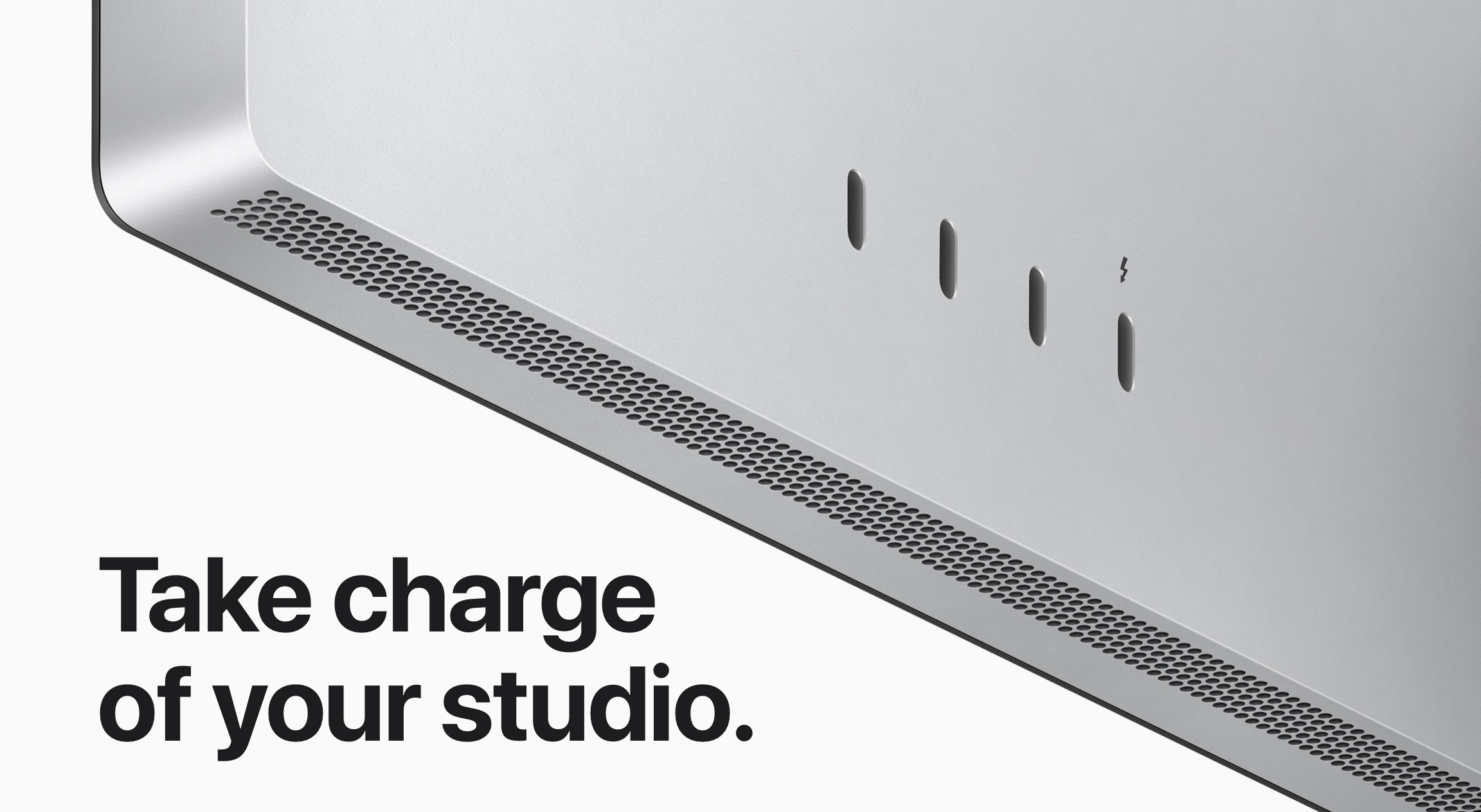
All of these displays feature Thunderbolt ports for single-cable connectivity with 3 additional USB-C ports for peripherals. However, Studio Display stands out with up to 10 Gbps speed for its USB-C ports that use USB 3.1 Gen 2.
| Studio Display | Samsung ViewFinity S9 | LG UltraFine 5K | |
| Thunderbolt | 1 upstream | 1 upstream | 1 upstream |
| USB-C | x3 (3.1 Gen 2) | x3 (likely 3.0) | x3 (3.0) |
| Power delivery | 96W | 90W | 94W |
| VESA compatible | ✅ (decide at time of purchase) | ✅ | ✅ |
| AirPlay | ❌ | ✅ | ❌ |
| Smart Hub TV feature with remote | ❌ | ✅ | ❌ |
Samsung doesn’t specify what type of USB-C ports are included on the ViewFinity S9, so it’s probably 5Gbps with the 3.0 standard like the LG UltraFine, not 10Gbps like the Studio Display.
However, Samsung does include one extra port than the other two monitors, a mini DisplayPort.
Camera and audio
The Studio Display is the first piece of hardware Apple has put its 12 MP ultra wide camera outside of the iPad Pro/Air. That enables the valuable Center Stage feature for video calls and offers a 122-degree field of view.
Funny enough, Apple doesn’t mention 1080p on its Studio Display tech spec sheet at all, however, it did say at the “Peek performance” event that it’s the same camera as in the iPad Pro – and that specs page does say 1080p.
But despite having high-definition 1080p quality, the Studio Display has received a fair bit of criticism. Samsung’s 4K SlimFit camera that’s included with the ViewFinity S9 may be a better performer.
| Studio Display | Samsung ViewFinity S9 | LG UltraFine 5K | |
| Built-in webcam | ✅ | ✅ | ✅ |
| Lens specs | 12 MP ultra wide, f/2.4 aperture, 122-degree view, supports 1080p | 4K | 1080p |
| Center Stage | ✅ | ❌ | ❌ |
| Speakers | 6-speaker system with Spatial Audio | 2 x 5W | 2 x 5W |
| Mic | Studio-quality 3-mic array | Far-field mic | ✅ |
When it comes to speakers though, Studio Display may win with its 6-speaker audio system (4 force-canceling woofers and 2 tweeters) that can play Spatial Audio and Apple’s studio-quality 3-mic array.
That’s up against dual 5W speakers in both the Samsung and LG monitors.
Design
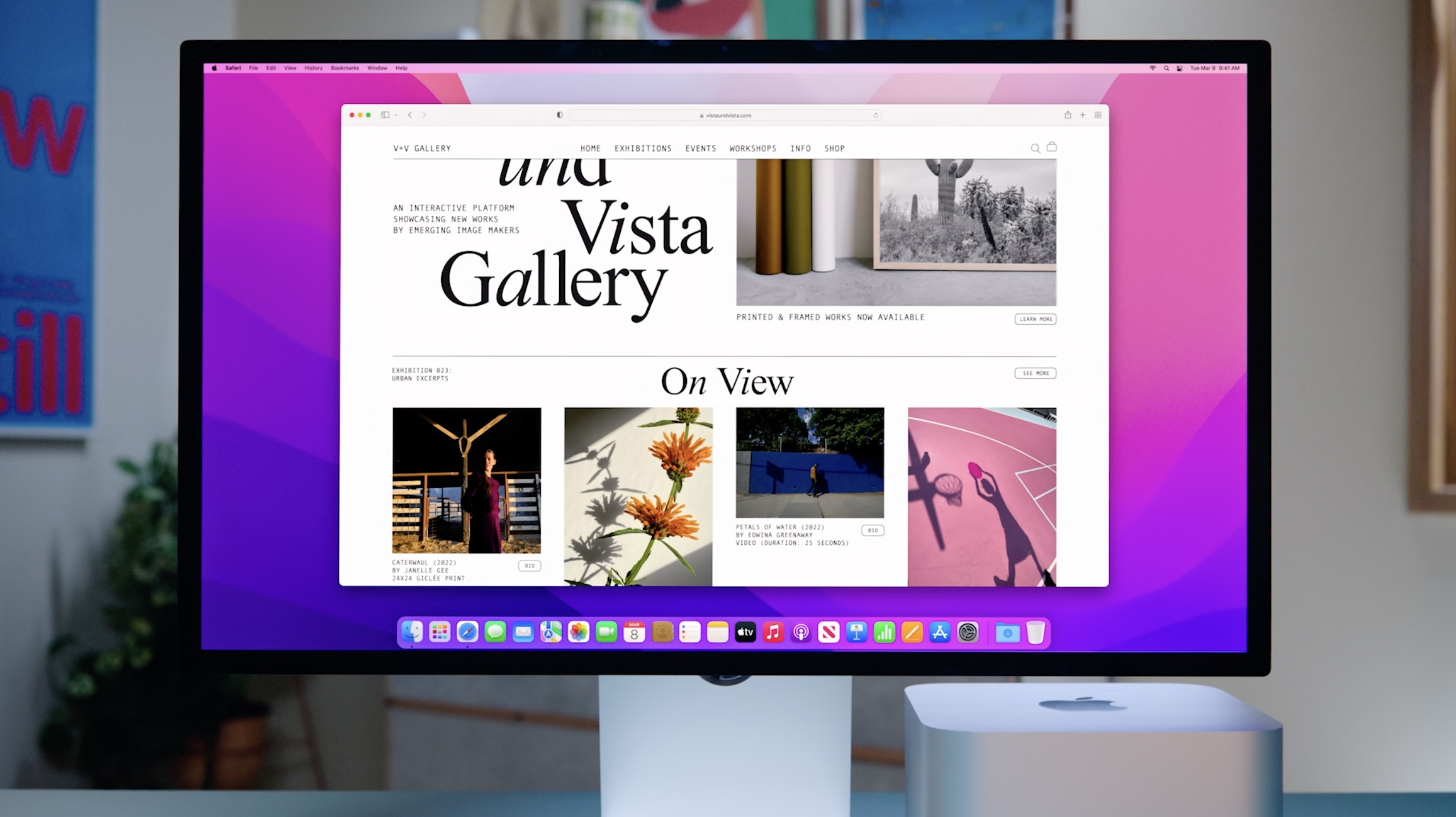
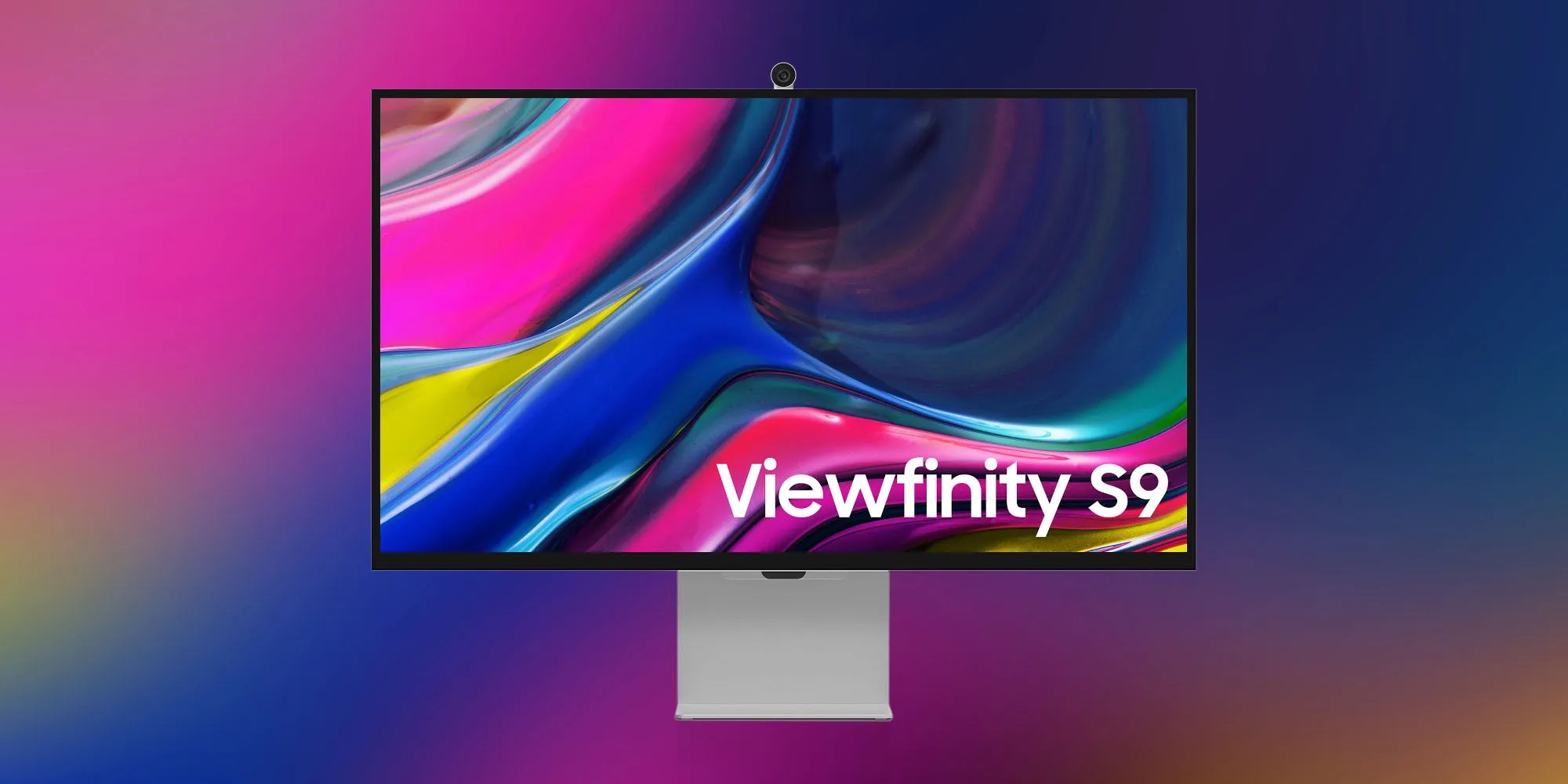
The design and build quality alone are enough for many to choose Apple’s Studio Display over the LG UltraFine.
But now the Samsung ViewFinity S9 has arrived with similar, sleek styling. It also comes standard with tilt, height, and pivot adjustment. For the Studio Display, you have to pay $400 extra to get the height-adjustable stand.
However, Samsung’s ViewFinity uses a metal stand but a silver-colored plastic back panel whereas Apple uses aluminum for the entire build.
| Studio Display | Samsung ViewFinity S9 | LG UltraFine 5K | |
| Stand included | ✅ (tilt only incl., $400 for height + tilt stand) | ✅ (tilt, height, and pivot adj) | ✅ (tilt and height adj) |
| Black plastic build | – | – | ✅ |
| Aluminum build | ✅ (full aluminum) | ✅ (aluminum stand, plastic back) | ❌ |
| Apple Polishing Cloth included? | ✅ (with nano-texture version) | ❌ | ❌ |
| Weight with stand | 13.9 or 16.9 pounds | 16.3 pounds | 18.7 pounds |
Some reviews have mentioned that with a full metal build, Apple Studio Display feels sturdier than the ViewFinity S9.
Reference modes
Apple’s Pro Display XDR excels for pros with 11 different reference modes (plus custom ones). Meanwhile, the Studio Display features support for 9 of those 11.
Samsung’s ViewFinity S9 doesn’t feature all of the same reference modes but does include support for:
- DCI-P3
- sRBG
- BT.709
- Custom
- Graphic
- Eco
- Entertain
Plus ViewFinity comes with the Smart Calibration color management software. Here’s what reference modes are available with Apple Studio Display:
| Studio Display | |
| Apple Display (P3-600 nits) | ✅ |
| Pro Display XDR (P3-1600 nits) | ❌ |
| HDR Video (P3-ST 2084) | ❌ |
| HDTV Video (BT.709-BT.1886) | ✅ |
| NTSC Video (BT.601 SMPTE-C) | ✅ |
| PAL and SECAM (BT.601 EBU) | ✅ |
| Digital Cinema (P3-DCI) | ✅ |
| Digital Cinema (P3-D65) | ✅ |
| Design and Print (P3-D50) | ✅ |
| Photography (P3-D65) | ✅ |
| Internet and Web (sRGB) | ✅ |
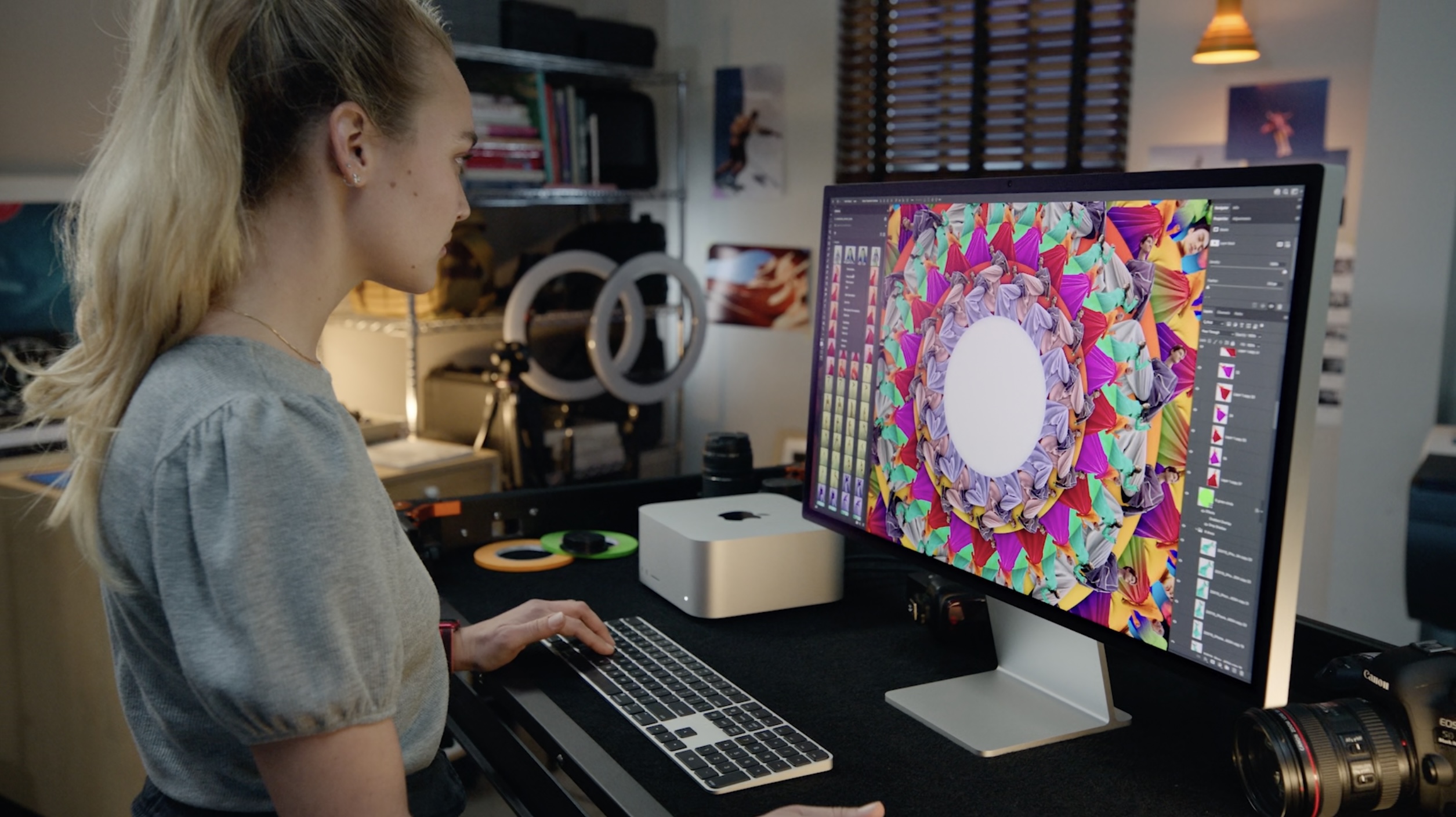
Apple Studio Display vs Samsung ViewFinity S9 wrap-up
Pros for ViewFinity S9
It might seem like there’s not much to pull Apple users away from choosing the Studio Display as both 5K monitors start at $1,599. However, Samsung is including some features that you have to pay quite a bit more for with Apple’s Studio Display.
First, to get the height and tilt adjustable stand with Apple, that bumps the price up to $1,999.
And if you’d also like the less-reflective nano-texture glass finish, the Apple Studio display is $2,299 – almost 50% more expensive than the Samsung ViewFinity S9.
Samsung’s display comes standard with VESA mount support and the 4K webcam could end up being better than Apple’s 12MP webcam in the Studio Display.
Plus with the ViewFinity S9, you get the Smart Hub/TV functionality. All of that makes the S9 ViewFinity feel like a compelling package.
However, while ViewFinity uses a metal stand it features a silver-colored plastic back panel.
Pros for Studio Display
Studio Display does have some features the ViewFinity S9 does not like Hey Siri support, Spatial Audio/Dolby Atmos support, studio quality mics, the option of a glossy or matte screen finish, and 96W of passthrough power (vs 90W with the ViewFinity).
And of course, the pull of Studio Display being an official Apple monitor to match a MacBook or a desktop Mac may be enough to tip the scales for many. Add that to the fact that Studio Display uses a full aluminum build where Samsung is using a hybrid metal/plastic design.
Also, sometimes the Apple Studio Display can be found for less than the $1,599 MSRP which makes it more appealing.
What do you think about the ViewFinity S9 vs Apple Studio Display? Does the new monitor steal the spotlight from Studio Display? Share your thoughts in the comments!
Curious about more affordable but capable 4K monitors? We’ve got a full round-up of solid choices in our guide:
Thanks for reading our guide on the Studio Display vs Samsung ViewFinity S9!
FTC: We use income earning auto affiliate links. More.







